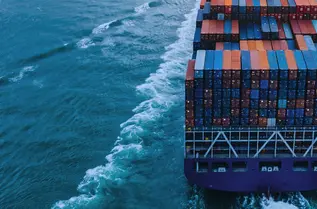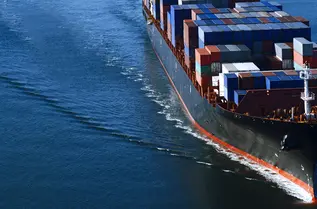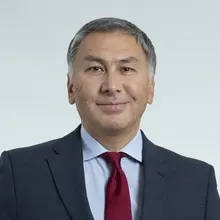Summary
Introduction
Significant investment is required to build resilient economies capable of addressing the current climate and environmental challenges. This need is particularly crucial in emerging market and developing economies (EMDEs), which are relatively more vulnerable to the impacts of climate change2. More broadly, large-scale investment estimated to be as high as US$4.5 trillion per year in EMDEs is required to achieve the United Nations Sustainable Development Goals (UN SDGs)3. Securing that scale of investment could be particularly challenging in the context of the growth shock caused by the pandemic4, ongoing constraints to economic recovery in EMDEs, and the uncertainty generated by the war in Ukraine.
In recent years, sustainable finance has gained considerable momentum and set records. Widespread investor appetite and the increasing focus of bond issuers on environmental and sustainability commitments have been driving this growth. In the global fixed-income market, issuance of green, social, sustainability, and sustainability-linked (GSSS) bonds (as defined in Box 1.1) reached US$1.1 trillion in 2021, almost double the US$596 billion in 2020. The growth in the fixed income market has been accompanied by a proliferation of new environmental, social, and governance (ESG) funds and products in equity markets: assets under management in ESG-focused exchange-traded funds totaled US$425 billion in 2021, 85 percent of which was in equity funds5. Although this strong momentum of sustainable finance is encouraging, considerable scale is needed.
In EMDEs, both public and private capital are necessary to meet sustainable investment needs. Fiscal measures related to COVID-19 relief and recovery were initially viewed as an opportunity to focus on green and sustainable investments. However, the green aspect of the recovery in EMDEs has been limited. In many cases, there is simply not enough fiscal space, and much of the available fiscal support has focused on short-term relief efforts. As a result, only about 8.5 percent of the limited recovery spending by EMDEs has so far been allocated to finance green activities or projects6.
The 26th United Nations Climate Change Conference of the Parties (COP26) provided focus for accelerating policy efforts. In particular, the revised nationally determined contributions (NDCs) of many EMDEs set clear medium- and long-term targets to reduce greenhouse gas emissions and adapt to the impacts of climate change. Despite some criticism that the plethora of new pledges, commitments, targets, and initiatives made at COP26 are not sufficiently ambitious, policy packages and sustainable finance strategies to reinforce these commitments that EMDEs put in place would provide a strong impetus and generate new investment opportunities for the transition to a low-carbon economy.
Developed markets made new pledges to increase public climate finance to EMDEs by 50 percent on average, despite the well-publicized failure to meet the previous pledge to provide US$100 billion on an annual basis. The role of private sector finance also featured prominently. Among other initiatives, the Glasgow Financial Alliance for Net Zero, whose membership numbers 450 financial firms across 45 countries, committed US$130 trillion to finance the global transition to net zero. This commitment provides a strong backdrop for the expansion of private green finance flows in EMDEs.
This fourth edition of the “Emerging Market Green Bonds Report” provides an overview of EMDE green bond developments in 2021 and discusses the implications of recent global policy initiatives. It provides an updated medium-term outlook for the market, recognizing the substantial uncertainties due to the ongoing war in Ukraine and its myriad geopolitical, macroeconomic, and market implications.
For the duration of the war, conflict-related disruptions and the imposition of sanctions will have a major impact on global energy supplies, commodity prices, and food security. Energy importers will face pressure from widening trade deficits and headwinds for economic growth, especially in countries where there is limited fiscal space. Higher energy and food prices are also adding to inflation dynamics, putting pressure on central banks in advanced economies and EMDEs to tighten monetary policy. Shortages of grains and fertilizers could lead to significant supply disruptions, threatening food security, particularly in Africa, the Middle East, and Central Asia.
In Europe, the United States, and other countries imposing sanctions on the Russian Federation, energy security will be a major challenge for policy makers and will underscore the complexities of a successful transition to net-zero emissions of greenhouse gases. In the near term, difficult choices will have to be made in order to secure sufficient energy supplies from a mix of sources. These decisions may well include delays in the phasing out of some coal and nuclear power stations. Spending priorities related to the war may put an additional strain on available public financing to support sustainability needs.
In both developed countries and EMDEs, investments in clean energy and technology and the supporting infrastructure that are crucial for meeting the net-zero targets would help them become more energy independent. In addition to renewables, investments in energy efficiency and electric transport will over time help reduce the dependence on fossil fuels. Efforts to ramp up sustainable agriculture that lowers the need for fossil-fuel-based fertilizers could help address both energy and food security concerns. Green bonds placed by private and public sector issuers can raise finance for such efforts. On the social front, social bonds could support projects related to the humanitarian impact of the war.
Channeling sufficient capital to meet the needs for sustainable finance in EMDEs will require building on established foundations, as well as innovating in how and where capital is directed. The COP26 discussions and upcoming international conferences signal an increasing emphasis on biodiversity, deforestation, land use, and agricultural issues, as well as climate adaptation. The growth of social, sustainability, and sustainability-linked bond (SLB) issuance points toward an expanding set of issuers and investors. In particular, as discussed in Box 2.1, the SLB format encourages those issuers seeking to make progress on transition commitments. As these markets mature, they will be subject to enhanced scrutiny, requiring efforts to strengthen frameworks and taxonomies that ensure disclosure and transparency. Other avenues beyond the issuance of new debt include the greening of debt restructuring, enabling countries whose debt is unsustainable to direct capital toward green and sustainable investment. Innovative efforts from public and private stakeholders remain vital to mobilize investment flows sufficient to meet the demands of resilient and sustainable economies.
To find more, download the full report
2 See Intergovernmental Panel on Climate Change, Climate Change 2022: Impacts, Adaptation and Vulnerability, Summary for Policymakers: https://www.ipcc.ch/report/ar6/wg2/downloads/report/IPCC_AR6_WGII_ SummaryForPolicymakers.pdf.
3 See Dana Vorisek and Shu Yu, “Understanding the Cost of Achieving the Sustainable Development Goals” (Policy Research Working Paper 9146, World Bank, Washington, DC, 2020), https://documents1.worldbank.org/curated/ en/744701582827333101/pdf/Understanding-the-Cost-of-Achieving-theSustainable-Development-Goals.pdf.
4 In the medium-term, real gross domestic product (GDP) in EMDEs is projected to fall 6 percent short of prepandemic projections, according to the IMF April 2022 World Economic Outlook.
5 Bloomberg, “ESG ETF Inflows Increase 46% to $798.7M in Past Week,” January 31, 2022.
6 According to Oxford’s Global Recovery Observatory





